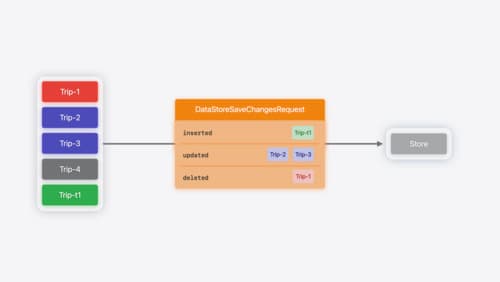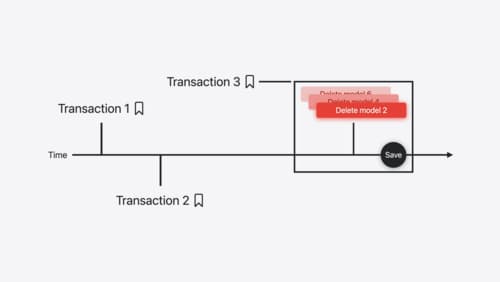What's new in Core Data?
Asked on 2024-08-06
1 search
What's New in Core Data?
At WWDC 2024, Apple introduced several new features and improvements related to Core Data, primarily through the new SwiftData framework. Here are the key updates:
-
Integration with SwiftData:
- SwiftData now uses Core Data by default to store information, making it easier to work with your queries while iterating on views. This integration allows for a more seamless experience when working with data in Swift.
-
Custom Data Stores:
- SwiftData supports custom data stores, allowing you to use alternative backends like SQLite, remote web services, or even collections of JSON files. This flexibility opens up new possibilities for data storage and management.
-
History API:
- The new history API in SwiftData provides a way to track changes to your app's models. This is useful for tracking local changes that need to be synced to a remote web service. The history API records transactions and changes, making it easy to inspect all the changes that were recently made.
-
Index and Unique Macros:
- The addition of the
indexanduniquemacros helps optimize queries and ensure data integrity. Theindexmacro makes queries more efficient by indicating which properties are commonly queried together, while theuniquemacro ensures that a set of properties has no duplicate entries.
- The addition of the
-
Model Container Customization:
- The model container modifier allows for fine-tuning of data location and usage throughout the app. This makes it easier to manage how data is stored and accessed within your application.
For more detailed information, you can check out the following sessions from WWDC 2024:
- Platforms State of the Union (40:60)
- What’s new in SwiftData (03:37)
- Track model changes with SwiftData history (02:16)
Relevant Sessions
- Platforms State of the Union
- What’s new in SwiftData
- Track model changes with SwiftData history
- Create a custom data store with SwiftData

What’s new in SwiftData
SwiftData makes it easy to add persistence to your app with its expressive, declarative API. Learn about refinements to SwiftData, including compound uniqueness constraints, faster queries with #Index, queries in Xcode previews, and rich predicate expressions. Join us to explore how you can use all of these features to express richer models and improve performance in your app. To discover how to build a custom data store or use the history API in SwiftData, watch “Create a custom data store with SwiftData” and “Track model changes with SwiftData history”.

Create a custom data store with SwiftData
Combine the power of SwiftData’s expressive, declarative modeling API with your own persistence backend. Learn how to build a custom data store and explore how to progressively add persistence features in your app. To get the most out of this session, watch “Meet SwiftData” and “Model your schema with SwiftData” from WWDC23.

Track model changes with SwiftData history
Reveal the history of your model’s changes with SwiftData! Use the history API to understand when data store changes occurred, and learn how to use this information to build features like remote server sync and out-of-process change handing in your app. We’ll also cover how you can build support for the history API into a custom data store.
